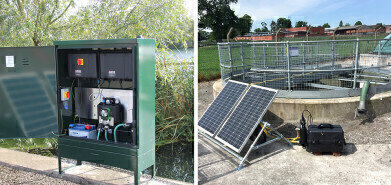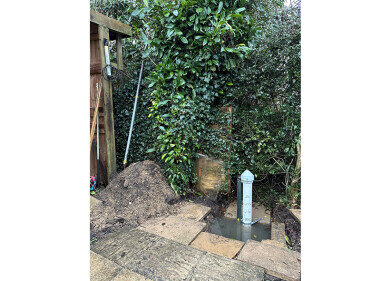Water/Wastewater
Improving river water quality with monitoring instrumentation technology
Dec 22 2021
The UK’s Environmental Audit Committee (EAC) has requested written evidence from water quality monitoring specialists, Meteor Communications, to assist the committee’s current inquiry into water quality in rivers. The submission came at a time when sewage spills were being widely reported in the UK’s media, and since the Environment Act 2021 put the onus on sewerage undertakers to gradually reduce the impact of storm-overflow discharges.
“We have been following the EAC enquiry closely,” explains Meteor Technical Director Andrew Scott, “and with over 300 of our ESNET outstations currently monitoring UK rivers, we were concerned that some of the participants may not be fully aware of this technological capability.
“Conveniently, data from the Environment Agency’s pollution investigations were recently made public, so we were able to show the EAC examples of the ways in which our technology is able to continuously track the key signatures for different types of pollution, and how these can be correlated with events such as heavy rainfall; delivering legally defensible information.”
Meteor personnel were asked to submit a written submission, appraising the current monitoring networks and describing how they can be upgraded to monitor downstream and upstream of sewage treatment facilities throughout England.
ESNET (Environmental Sensor NETwork) water quality monitoring systems come as a portable monitoring station or a permanent or semi-permanent kiosk-housed pumped system. Both systems were created to enable rapid deployment without the need for pre-existing power or communication infrastructures. Operators are provided with high resolution, real-time, multiparameter water quality data within minutes after deployment.
These monitors are usually equipped with sensors for a variety of parameters such as dissolved oxygen, pH, conductivity, turbidity, ammonium, temperature, blue green algae and chlorophyll. Other water quality parameters as well as remote cameras, water level and flow, or meteorological measurements can also be integrated into an ESNET monitor. Adding an autosampler allows for the collection of samples for laboratory analysis, at pre-set intervals and/or activated by specified alarm conditions. This is hugely advantageous for water companies and regulators as it enables the immediate collection of samples when responding to a pollution incident, helping operators decide on the appropriate mitigation measures and identify the source of contamination.
The EAC inquiry is a result of growing concern about water quality in England’s rivers, with just 14% of English rivers currently attaining ‘Good’ ecological status and no river reaching ‘Good’ on its chemical status. According to official reports, there were in excess 400,000 discharges of raw sewage into England’s rivers in 2020.
Andrew Scott continues: “All stakeholders are currently looking for ways to improve water quality in rivers, and effective continuous monitoring of receiving waters will perform a vital role in achieving that objective. In addition, the Environment Act 2021 places a new responsibility for monitoring the quality of watercourses into which storm overflows discharge.
“Water companies, regulators, consultants and water users can therefore be reassured that proven technology exists to better understand the factors affecting the quality of receiving waters.”
Digital Edition
IET 34.2 March 2024
April 2024
Gas Detection - Biogas batch fermentation system for laboratory use with automatic gas analysis in real time Water/Wastewater - Upcycling sensors for sustainable nature management - Prist...
View all digital editions
Events
May 03 2024 Seoul, South Korea
May 05 2024 Seville, Spain
May 06 2024 Minneapolis, MN, USA
May 13 2024 Munich, Germany
May 15 2024 Lund, Sweden


















